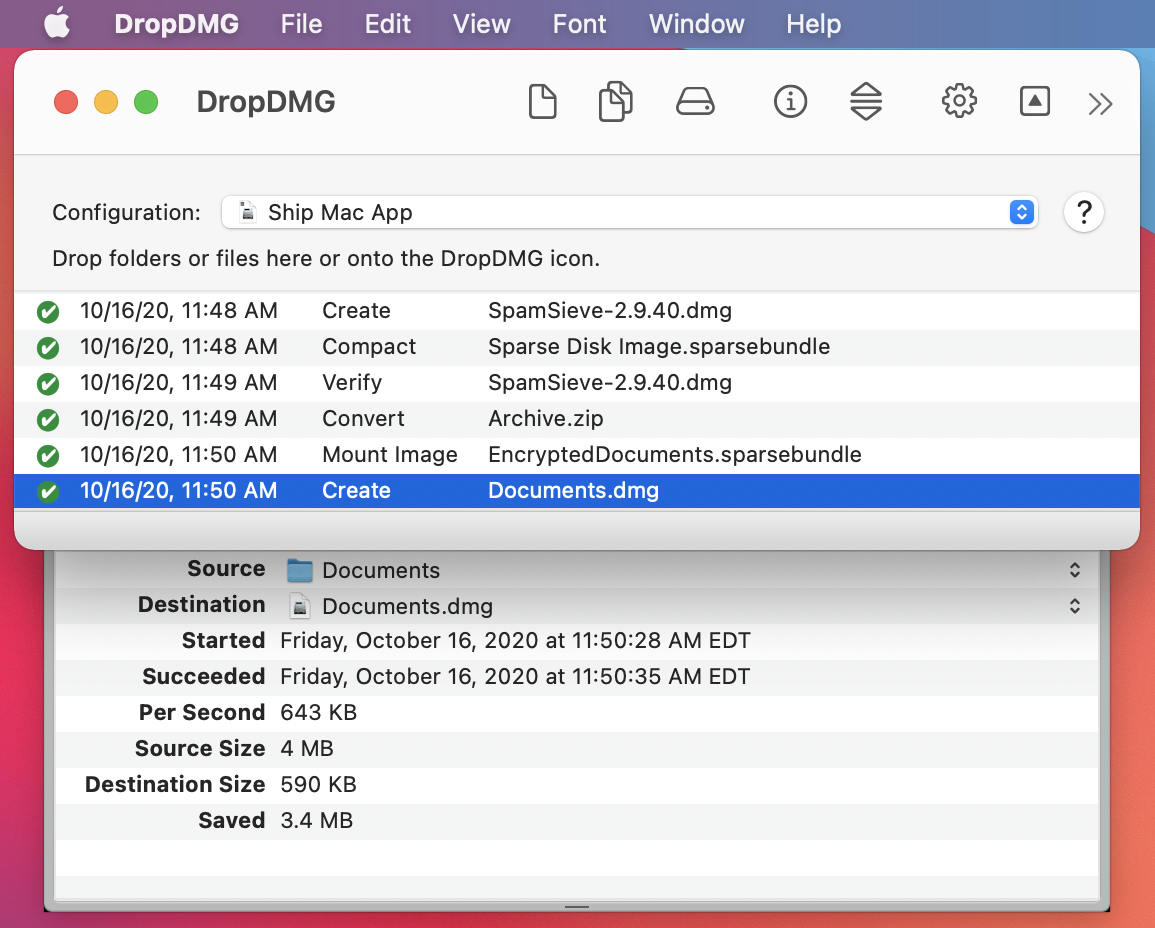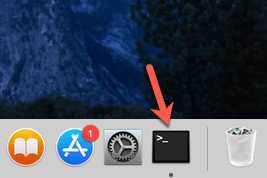

- #SEE DMG FILES IN TERMINAL HOW TO#
- #SEE DMG FILES IN TERMINAL MAC OS X#
- #SEE DMG FILES IN TERMINAL INSTALL#
- #SEE DMG FILES IN TERMINAL FULL#
- #SEE DMG FILES IN TERMINAL PASSWORD#
#SEE DMG FILES IN TERMINAL PASSWORD#
By default, your login password unlocks the disk, but if you forget that, you need another way to access your data. To turn on FileVault, go to System Preferences > Security & Privacy, unlock the preference pane by clicking the padlock and entering your administrator’s user name and password, then click FileVault.Ĭlick Turn On FileVault. It’s a good idea to erase it anyway, but there is no longer a "secure erase" feature for SSDs on macOS, so it’s really important to use FileVault on an SSD.

Since it is password protected, anyone who recovers the disk will not be able to access your files. And if you decide to sell, give away, or destroy your Mac, you don’t need to worry about securely erasing the disk. In addition, FileVault 2 allows you to use Find My Mac to remotely erase your drive if your Mac is lost or stolen. FileVault uses uses XTS-AES-128 encryption with a 256-bit key that’s a simple way of saying that it is extremely robust. And if someone removes the drive and attempts to access the files it contains, they won’t be able to. No one can access that drive, or even start up your Mac, without the FileVault password. While there were good reasons to avoid the first implementation of FileVault, there are no reasons to not use it any more.įileVault provides full-disk encryption: when it is active, every file on your drive is encrypted, and as you write new files, they are encrypted too.

Now in its second iteration – FileVault 2 was released in 2011 – FileVault is secure and doesn’t noticeably affect the performance of your Mac. But over the years, Apple has improved FileVault, and processors have gotten much faster.
#SEE DMG FILES IN TERMINAL MAC OS X#
When Apple first added FileVault to Mac OS X in 2003, the feature was clunky it slowed down Macs, and I didn’t recommend using it at the time.
#SEE DMG FILES IN TERMINAL HOW TO#
In this article, I’ll explain how to encrypt your startup disk with FileVault how to encrypt other disks and how to create encrypted disk images to store files securely in the cloud or send by email and how to encrypt PDF files.

(Unbreakable with current computing power it’s possible that future quantum computers will be able to break the robust encryption algorithms that macOS uses.) macOS provides a suite of tools to protect you, and, in this article, I’ll discuss the many ways you can use built-in macOS features to provide unbreakable encryption. The best way to protect your data is to encrypt your files, ensuring that, even if they get into the hands of hackers or cybercriminals, your personal data is safe.
#SEE DMG FILES IN TERMINAL INSTALL#
Now you can boot up from your newly bootable disk and either Install OSX10.9 on another device or use the Terminal/Disk Utility or Firmware Password Utilities on another device.Software & Apps How to Use Apple’s Built-in Features to Encrypt Files and Folders
#SEE DMG FILES IN TERMINAL FULL#
Remove the existing Packages alias link from the newly restored image rm /Volumes/OS\ X\ Base\ System/System/Installation/PackagesĬopy the full OSX Mavericks Packages over to the new image….takes a while cp -R /Volumes/OS\ X\ Install\ ESD/Packages/ /Volumes/OS\ X\ Base\ System/System/Installation/PackagesĪnd there it is! – to eject the new bootable USB OSX Mavericks 10.9 disk ‘cd’ to home and eject cd ~/ hdiutil eject /Volumes/OS\ X\ Base\ System/ This will change ‘ BootDisk‘ to ‘ OS X Base System‘ This puts you back in the Finder in front of the newly mounted InstallESD.dmg, go back to Terminal and clone the BaseSystem.dmg to the remote USB drive sudo asr restore -source /Volumes/OS\ X\ Install\ ESD/BaseSystem.dmg -target /Volumes/BootDisk/ -erase -noverify Swap to the newly mounted image cd /Volumes/InstallESD.dmg Mount the InstallESD.dmg buried deep in the app hdiutil attach /Applications/Install\ OS\ X\ Mavericks.app/Contents/SharedSupport/InstallESD.dmg -noverify Just for the crazy ones……after Mavericks is downloaded….and again this assumes you external disk is named BootDisk If you want all to return back to normal and hide the system files run a couple more commands in the Terminal defaults write AppleShowAllFiles FALSE killall Finder How to create the OSX 10.9 Mavericks Bootable Drive just via Terminal


 0 kommentar(er)
0 kommentar(er)
